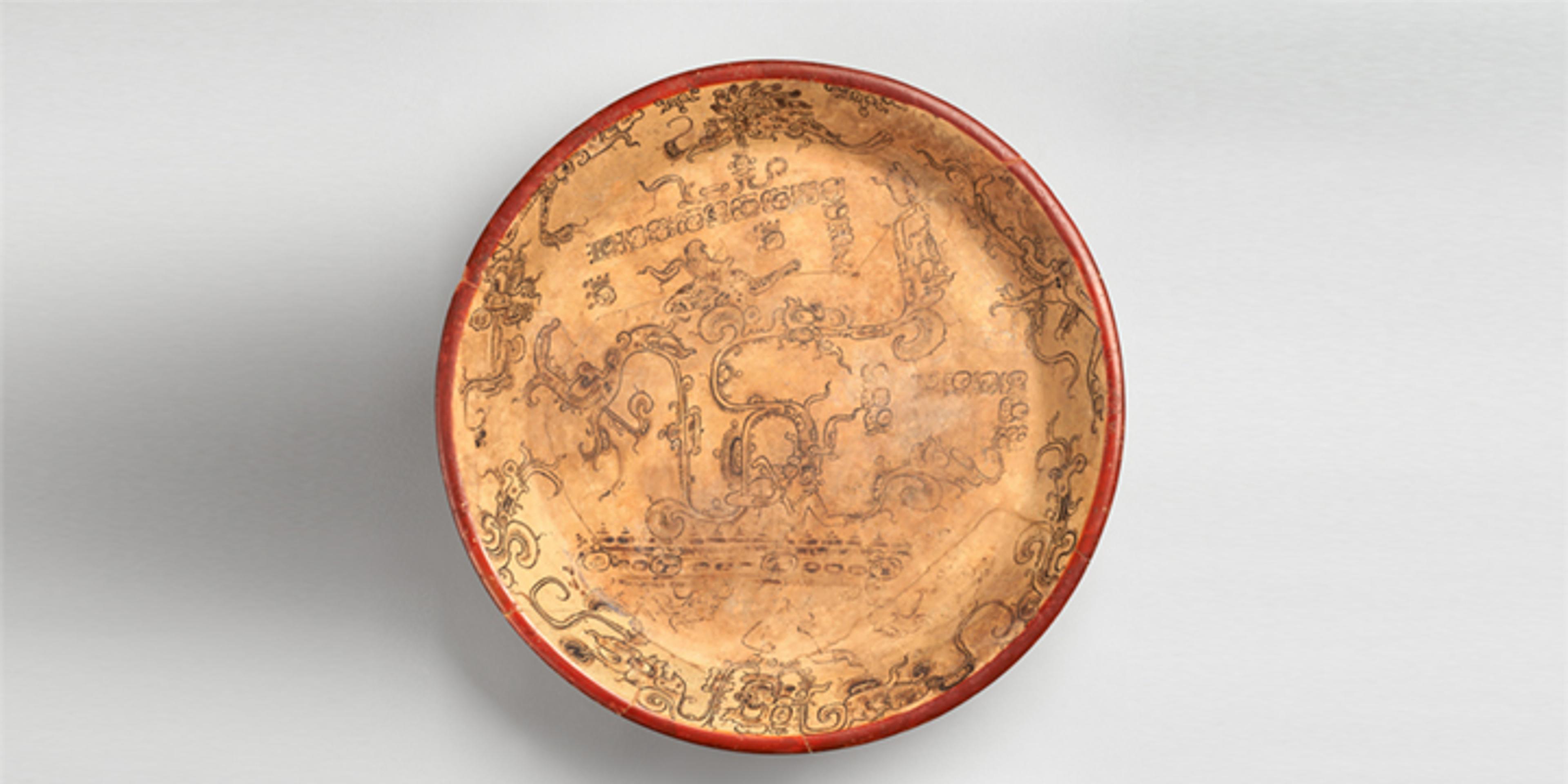In Maya art, the gods are depicted at all stages of life: as infants, as adults at the peak of their maturity and influence, and as they age. The gods could die, and some were born anew, serving as models of regeneration and resilience. In Lives of the Gods: Divinity in Maya Art, rarely seen masterpieces and recent discoveries trace the life cycle of the gods, from the moment of their creation in a sacred mountain to their dazzling transformations as blossoming flowers or fearsome creatures of the night.
Maya artists, who lived in what is now Belize, El Salvador, Guatemala, Honduras, and Mexico, depicted the gods in imaginative ways from the monumental to the miniature—from exquisitely carved, towering sculptures to jade, shell, and obsidian ornaments that adorned kings and queens, connecting them symbolically to supernatural forces. Finely painted ceramics reveal the eventful lives of the gods in rich detail.
Created by master artists of the royal cities of the Classic period (A.D. 250–900) Maya, the nearly 100 landmark works in Lives of the Gods evoke a world in which the divine, human, and natural realms are interconnected and alive.
To access the booklet of all in-gallery labels, click here.
The exhibition is made possible by the William Randolph Hearst Foundation, the Placido Arango Fund, the Diane W. and James E. Burke Fund, the Gail and Parker Gilbert Fund, the Mellon Foundation, and The International Council of The Metropolitan Museum of Art.
It is organized by The Metropolitan Museum of Art and the Kimbell Art Museum.
The catalogue is made possible by the Samuel I. Newhouse Foundation, Inc.
Additional support is provided by the Mellon Foundation and the Doris Duke Fund for Publications.
In the town of Santa Cruz Verapaz, Guatemala, young dancers perform a mythical story that explains the origins of social institutions and the rationale for religious rituals dedicated to the gods of the earth and the mountains. Ancient artists depicted scenes from related narratives on ceramic vessels, including some vessels in this exhibition. This video shows the Dance of the Macaws, described through the words of members of the dance group, in the Poqomchi’ Maya language.
Audio Guide
Listen to exhibition curators discuss a who’s who of Maya gods, hear Classic Mayan inscriptions read aloud, and learn stories from speakers of Poqomchi’, one of many Mayan languages in use today.
Click here to listen.

The God from the Black Water
Maya artists mined a rich body of mythological lore to visualize their gods in imaginative ways. Read more on Perspectives.
Exhibition Objects
Press the down key to skip to the last item.
Latest reviews
A magnificent show.
Mind-blowing.
Get up close to the ancient secrets and rites of the Mayans in one of the most renowned museums in the world.
Dazzling.
This show is a gift.
Featured Media
The Art of the Maize God: Origins, Regenerations, Inspirations
Join a panel of experts to learn about the lifecycles of Maya gods with a focus on the idea of regeneration, a process that finds a parallel in the staple crop of the Maya, maize (corn).
